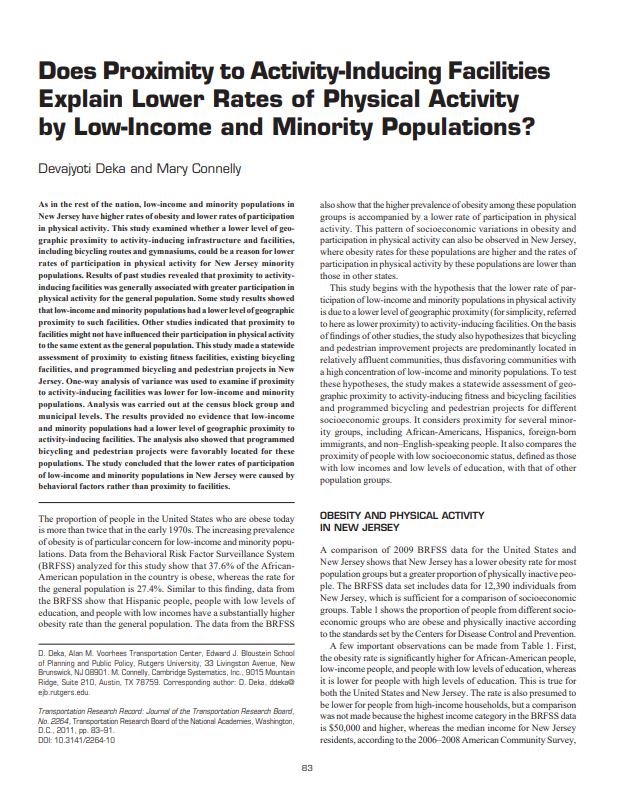Abstract
As in the rest of the nation, low-income and minority populations in New Jersey have higher rates of obesity and lower rates of participation in physical activity. This study examined whether a lower level of geographic proximity to activity-inducing infrastructure and facilities, including bicycling routes and gymnasiums, could be a reason for lower rates of participation in physical activity for New Jersey minority populations. Results of past studies revealed that proximity to activity-inducing facilities was generally associated with greater participation in physical activity for the general population. Some study results showed that low-income and minority populations had a lower level of geographic proximity to such facilities. Other studies indicated that proximity to facilities might not have influenced their participation in physical activity to the same extent as the general population. This study made a statewide assessment of proximity to existing fitness facilities, existing bicycling facilities, and programmed bicycling and pedestrian projects in New Jersey. One-way analysis of variance was used to examine if proximity to activity-inducing facilities was lower for low-income and minority populations. Analysis was carried out at the census block group and municipal levels. The results provided no evidence that low-income and minority populations had a lower level of geographic proximity to activity-inducing facilities. The analysis also showed that programmed bicycling and pedestrian projects were favorably located for these populations. The study concluded that the lower rates of participation of low-income and minority populations in New Jersey were caused by behavioral factors rather than proximity to facilities.
